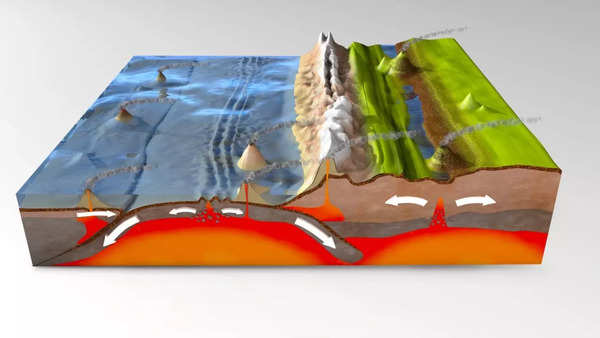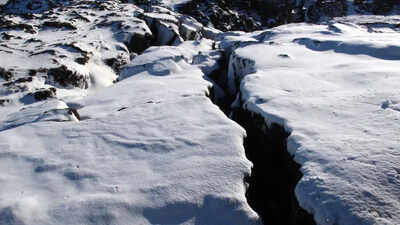Table of Contents
The mighty Himalayas came into existence because of a massive collision between two giant pieces of Earth’s crust, the Indian plate and the Eurasian plate. This powerful impact began around 60 million years ago and has been shaping the region since then. It’s not just responsible for creating the tallest mountains on the planet, but also for the frequent earthquakes and tremors that shake parts of South Asia today.
For a long time, scientists believed that the Indian plate was steadily sliding underneath the Eurasian plate in a more smooth and constant motion. This movement was thought to be slowly lifting the Tibetan Plateau, building the mountains over millions of years in a gradual, predictable way.
However, a new study has just turned that idea on its head. Scientists have recently found new seismic data that shows that the Indian tectonic plate isn’t just sliding under the Eurasian plate as once believed, it’s actually splitting in two deep beneath Tibet.
This major finding was shared at the American Geophysical Union conference in San Francisco and gives us a whole new perspective on the forces shaping the Earth’s surface in one of its most active regions.
Poll
Do you believe the new findings about the Indian plate will significantly change our understanding of tectonic activity?
What is happening beneath the surface?
The study, led by geophysicist Lin Liu of Ocean University of China, used advanced seismic imaging techniques to find out how the Indian plate isn’t smoothly subducting beneath the Eurasian plate as once thought. Instead, it’s undergoing a rare process called delamination, where the denser lower portion of the plate is peeling away and sinking into the Earth’s mantle, while the upper, lighter portion continues moving just beneath the surface.
Liu’s team analyzed data from 94 broadband seismic stations across southern Tibet to keep track of this behaviour. By combining up-and-down S-wave and shear-wave splitting data with back-and-forth P-wave information, they constructed a three-dimensional image of the plate’s structure and movement. Surprisingly, they found out that the parts of the Indian plate appear intact, while others are fragmenting about 100 kilometers beneath the Earth’s surface.

Tectonic plates are tearing apart
Rather than behaving like a rigid slab gliding under its neighbor, the Indian plate is showing signs of extreme internal stress and fragmentation. Some regions of the plate are essentially splitting, with the lower half being sucked deeper into the mantle. This peeling effect is not typical in continental collisions, and it suggests that the plate’s base is deforming dramatically as it descends into the planet’s hot interior.
“This revelation challenges long-standing assumptions about how the Indian plate is behaving beneath Tibet,” Liu said during the conference presentation. It’s a new chapter in our understanding of continental dynamics.
These are not just theoretical
This discovery also lines up with clues we can see on the surface. There are clear patterns of earthquakes and cracks across the Tibetan Plateau, which hint at something unusual happening underground. On top of that, scientists have found odd chemical signs in local spring water, like high levels of helium-3, a rare gas that usually comes from deep inside the Earth. All these pieces of evidence support the idea that what’s going on far below is actually reshaping not just the mountains, but the Earth’s crust itself.

Why does this matter for earthquake forecasting?
This discovery doesn’t just change how we understand the formation of the Himalayas, it could also improve how we predict earthquakes. By learning more about how the Indian plate is splitting deep underground, scientists can fine-tune their models for earthquake forecasting. “With a clearer three-dimensional image of how tectonic plates interact, scientists can better comprehend the Earth’s surface evolution and potentially forecast seismic events with greater accuracy,” the research team explained.
This new discovery shows that the Indian tectonic plate is splitting deep beneath Tibet, not just sliding smoothly as once thought. It’s a big shift in how we understand the Himalayas and earthquake activity in the region. By uncovering what’s happening underground, scientists hope to improve earthquake predictions and get a clearer picture of how our planet is changing.
In short, the Indian plate isn’t just sliding– it’s splitting. And that changes everything we thought we knew about the Himalayas. With this new insight, scientists are one step closer to understanding our shifting planet and preparing better for future quakes.


